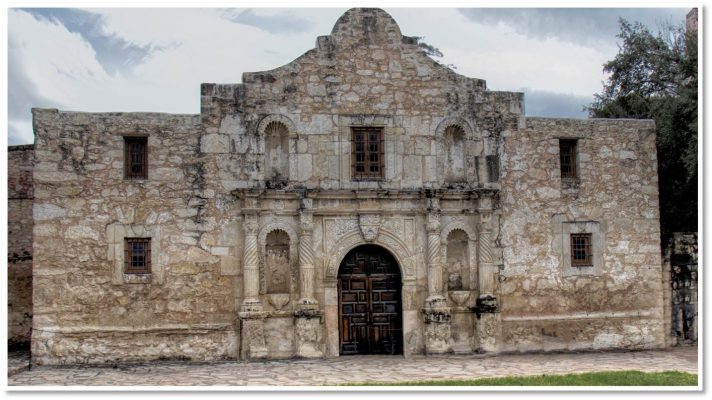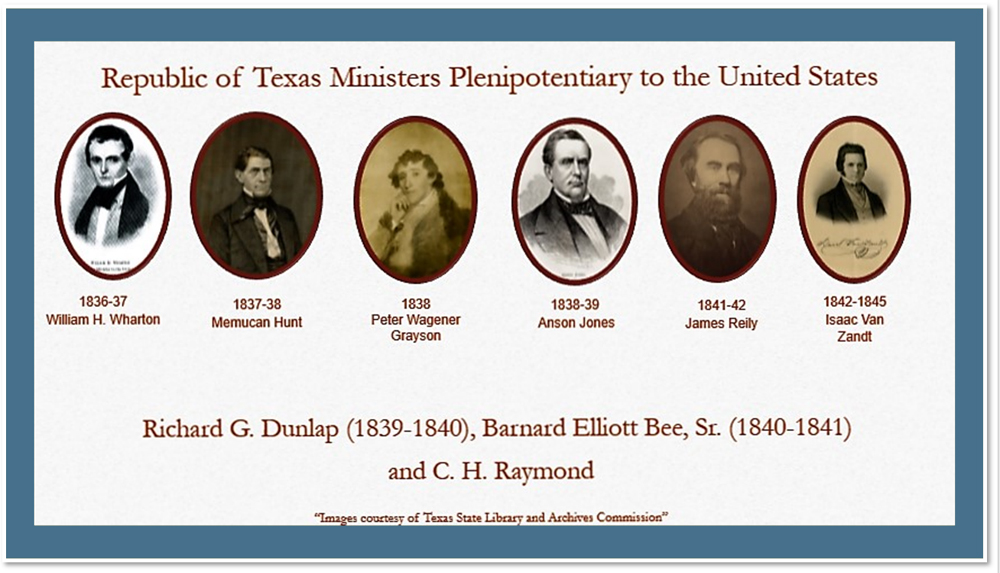Background of the Texas Revolution
 The history of the Republic of Texas and their Legation to the United States represents a pivotal time in American history. Through the newly established 1824 Mexican government’s invitation and encouragement, American colonists settled in the sparsely populated northern region of Mexico.
The history of the Republic of Texas and their Legation to the United States represents a pivotal time in American history. Through the newly established 1824 Mexican government’s invitation and encouragement, American colonists settled in the sparsely populated northern region of Mexico.
In 1833, Santa Anna was elected president of Mexico. After suspending the Mexican Constitution of 1824, tensions and disillusions with Santa Anna’s brutal policies led Mexican states, Zacatecas, Coahuila, Yucatan, and Texas to openly revolt against his rule.
On March 2, 1836, at Washington-on-the-Brazos, a group of Texans declared independence from Mexico, while at the same time, Santa Anna, and his army of over 2500 soldiers laid siege to the Alamo for 13 days and its 187 Texans. Santa Anna declared all who took up arms as pirates and rebels deserving of execution.
Texans and Americans angered by the massacre made “Remember the Alamo” their inspirational battle cry. On March 27, 1836, after the Texans lost the Battle of Coleto, 425 to 445 Texan prisoners of war were rounded up, shot, and their bodies burned adding another rallying cry of “Remember Goliad.” The Texas revolution was not over, there would be one more decisive battle.
On April 21, 1836, Sam Houston’s ragtag army surprised Santa Anna at San Jacinto. Santa Anna and his army were caught off guard, were routed as the Texans attacked crying out “Remember the Alamo, Remember Goliad.” Santa Anna was captured, his army surrendered, and a peace negotiated in the ensuing days.
Establishment of Diplomacy
To establish legitimacy as an independent nation, the Republic of Texas needed recognition by other sovereign nations. The new Republic’s needs included financial assistance as their treasury was nearly empty and protection from subsequent invasion by Mexico. The Republic’s goal was annexation by the United States. Other business of the Republic of Texas Legation included negotiating treaties of amity, commerce, and navigation, negotiating boundaries as well as securing loans.
To satisfy these needs, the new government established diplomatic relations with France, England, the Netherlands, Belgium, and the United States through their new diplomatic corp. With little financial support from Texas these diplomats were not able to establish formal embassies. The term legation was used to describe the Texas diplomatic ministers. Merriam Webster Dictionary defines a legation as: “1: the sending forth of a legate 2: a body of deputies sent on a mission specifically: a diplomatic mission in a foreign country headed by a minister 3: the official residence and office of a diplomatic minister in a foreign country”. In other words, wherever the minister worked on behalf the Texas Republic became the official Republic of Texas Legation. The ministers in Washington, D.C. worked out of boarding houses where they lived, as did senators, congressmen and others who came to Washington work temporarily.

